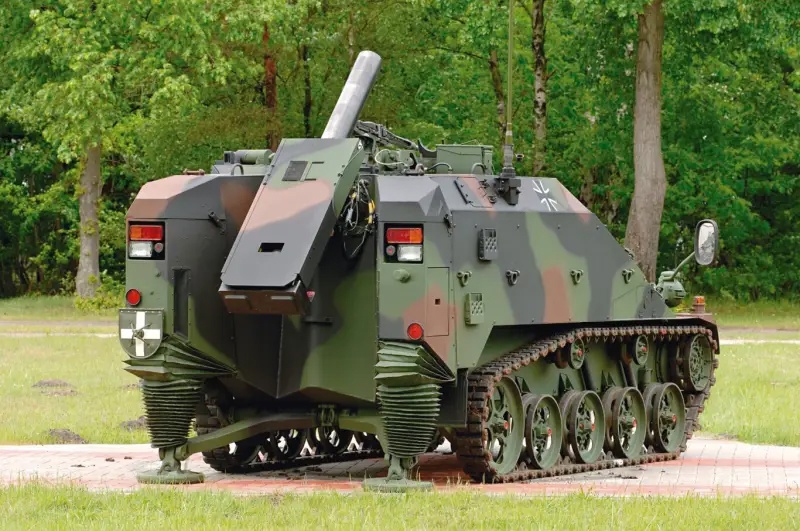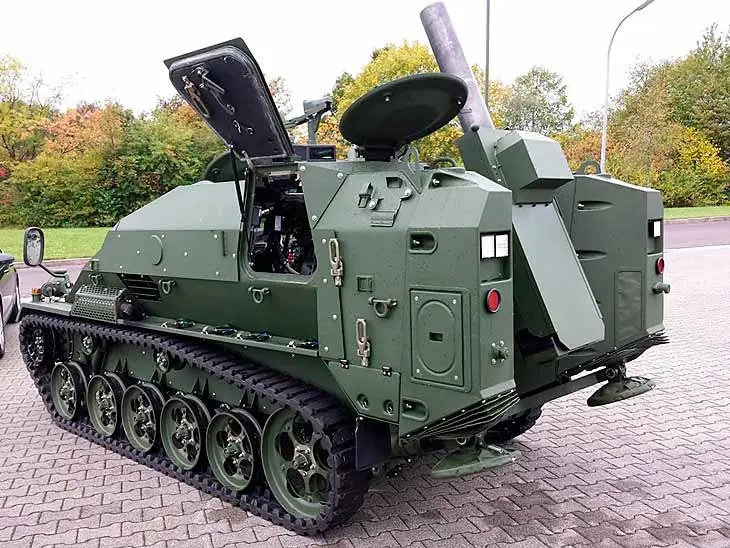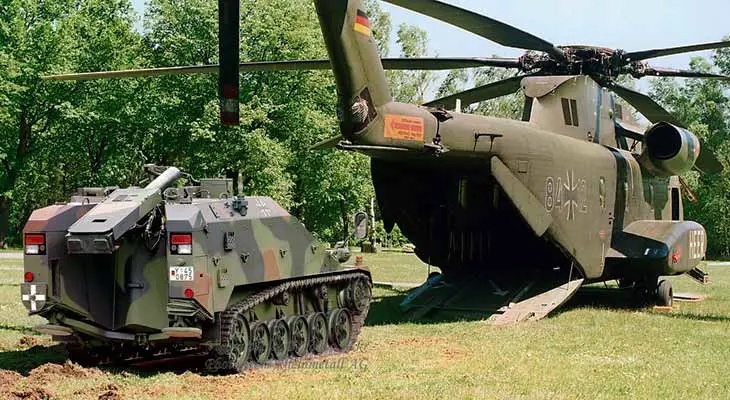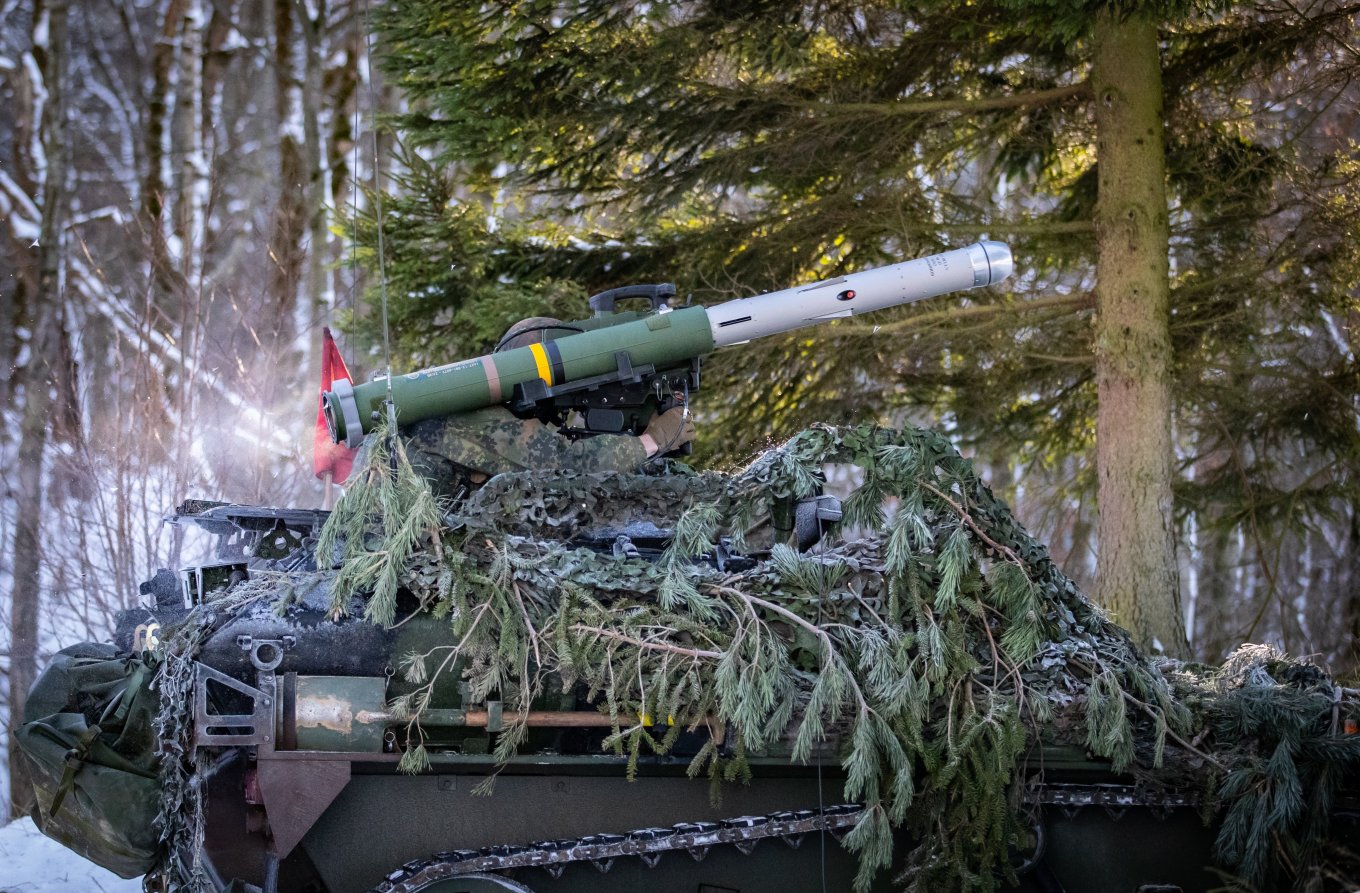In the public domain, you can find data on how Germany worked on the creation of a 120-mm self-propelled mortar based on the unique Wiesel airborne tankette with a combat weight of only 2.9 tons, the vehicle received the designation Leichter Panzermörser (or lePzMrs for short) and was created to replace older M113-based installations with 120-mm Tampella mortars in the ranks of the Bundeswehr.
However, in the end, the lePzMrs never went into production, the German army continues to use the M113 with 120-mm Tampella mortars (40 such vehicles in the Bundeswehr service at the beginning of last year, according to The Military Balance 2024), and this is actually paradoxical.

The idea to create a self-propelled 120-mm mortar based on the Wiesel tankette arose in the 1990s and had the following motives: the chassis of the M113 armored personnel carrier at that time began to be considered obsolete in the German army; In addition, the available shots for Tampella mortars already had more than 25 years of service, which was the cut-off indicator.
The choice for Wiesel in this situation fell due to the novelty and level of mass: serial production of such airborne tankettes took place from 1989 to 1992, a total of 321 units were produced.
To equip the Leichter Panzermörser, it was supposed to use the latest 120-mm mortar from Rheinmetall, which was created on the basis of Tampella, was loaded through the breech, had a rate of fire of 8-9 rounds per minute, and the firing range was up to 10-12 kilometers (for Tampella mortars, the same figure is 3 kilometers).

The ammunition carried was 27 shots, while it was assumed that it was possible to supply ammunition from the ground. The crew of the vehicle was three people (at Wiesel – only two), the combat weight of the lePzMrs was 4.2 tons
The advantage of Leichter Panzermörser was also the possibility of delivering the system by air (heavy CH-53 helicopters or C-160 transport aircraft).
The concept of application assumes that each of the lePzMrs can act either independently or as an element of the Mörserkampfsystem (MrsKpfSys) complex, where, in addition to the self-propelled mortar, the Führungsfahrzeuge (FüFhz) battery control machine was also supposed to function, which, for example, was supposed to issue target designation for firing.

The chronology in this story looked like this. The Bundeswehr issued an order for the creation of a self-propelled 120-mm mortar based on the Wiesel in 1998, in the same year the first prototype was created, but the first two prototypes were tested only in 2004. After testing in 2009, the German army issued an order for eight lePzMrs to Rheinmetall for a total of 55 million euros, the delivery of all vehicles took place in 2011.
However, it seems that this project has not been developed further due to the fact that the German military has lost understanding of what the use of lePzMrs will look like. Therefore, in 2015, the Bundeswehr announced that it would no longer order such self-propelled mortars, the current status of the eight previously manufactured Leichter Panzermörsers remains unclear.
Earlier, News Hub told about a similar story, namely, how Germany wanted to create self-propelled ATGMs based on the same Wiesel, but ended up buying 100 Boxer vehicles all the way to Australia.


